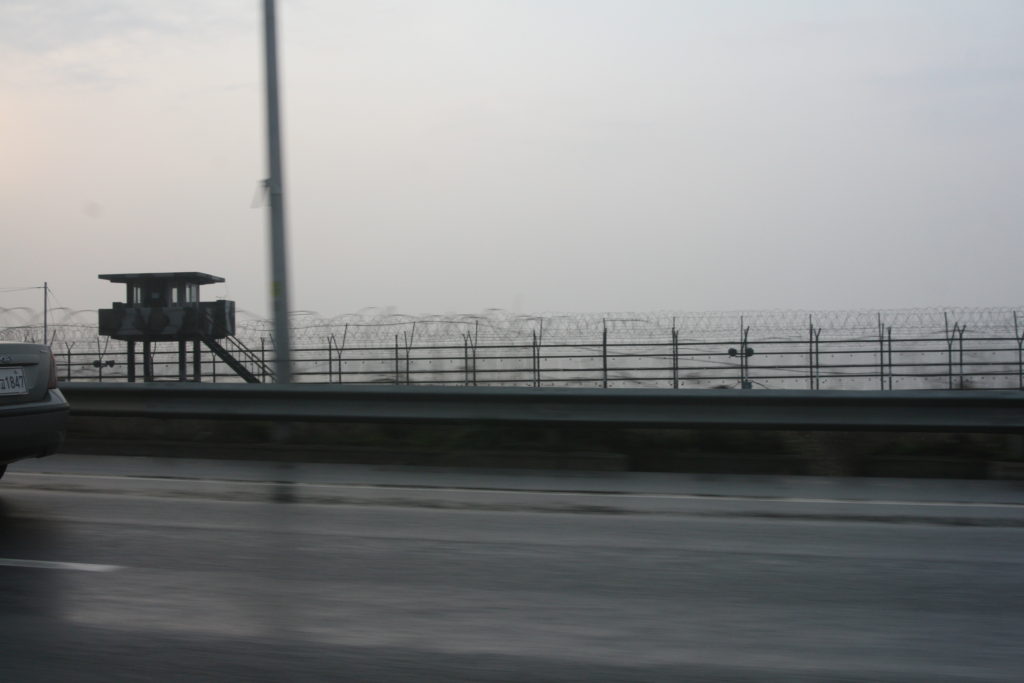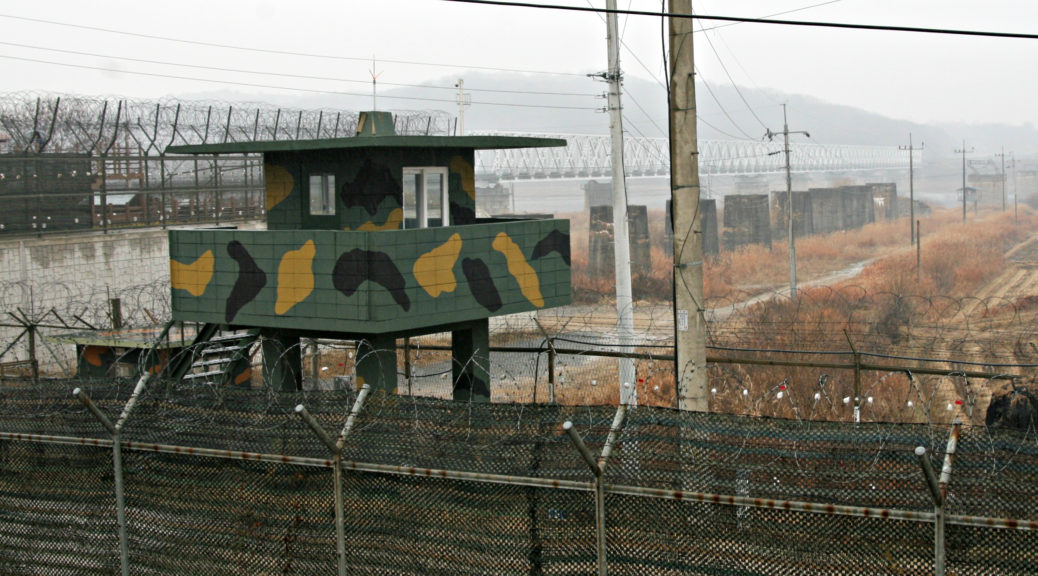
Imjingak (Near DMZ)
Our son and daughter-in-law were married on a Saturday and on Sunday, we had a wonderful lunch with them and our daughter-in-law’s family. After the lunch, our daughter-in-law’s aunt and uncle offered to take us to Imjingak Park (also called Imjingak Station and Imjingak Retreat). Imjingak is located in the town of Paju, South Korea and is only 4 1/2 miles from the Military Demarcation Line. It is the northern most place South Koreans can travel without a permit. Imjingak was established in 1972 with the hope that the two Korea’s might someday be unified. Tours of the DMZ and third tunnel leave from here, but we only visited the park. We were very fortunate in that our daughter-in-law’s uncle found a guide who spoke English who walked us through the park and explained what we were seeing. It was a very moving and eye-opening experience.
We saw the Bell of Peace which is a symbol of hope for peace for all mankind and the unification of Korea in particular. The Bell of Peace was dedicated on January 1, 2000. In honor of the 21st Century, the bell weighs 21 tons and the structure holding it has 21 steps. The first three pictures are of the Bell of Peace. In the second, our guide takes a picture of us with our daughter-in-law’s aunt and uncle.
Another interesting exhibit was the Stones of Peace Wall. Also dedicated on January 1, 2000, it displays stones from battlefields around the world. It too represents a hope for peace in the 21st Century.

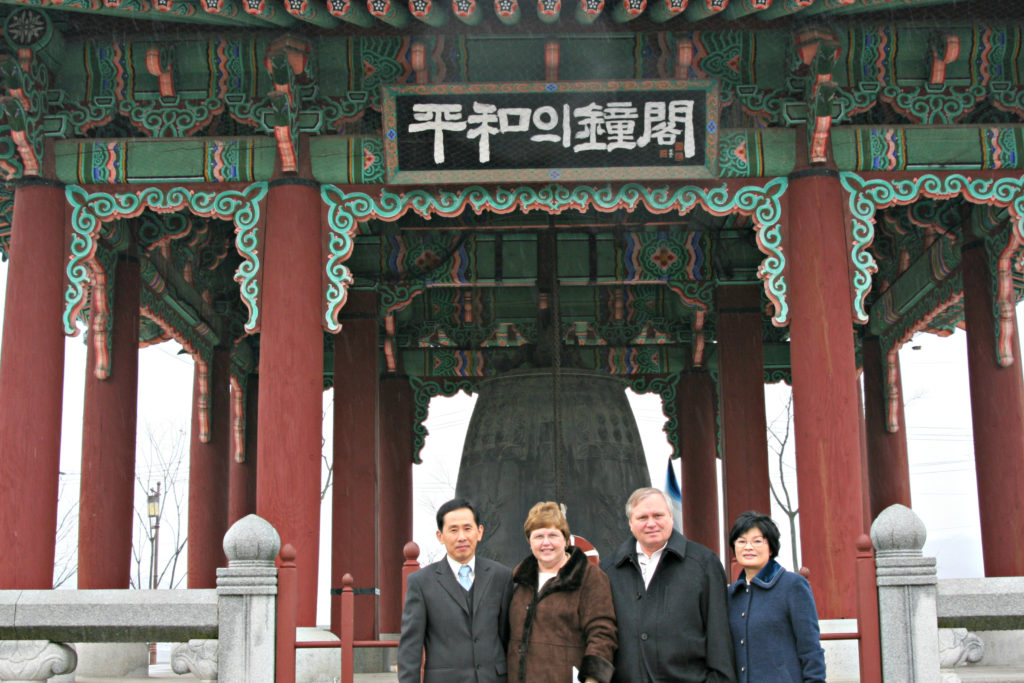

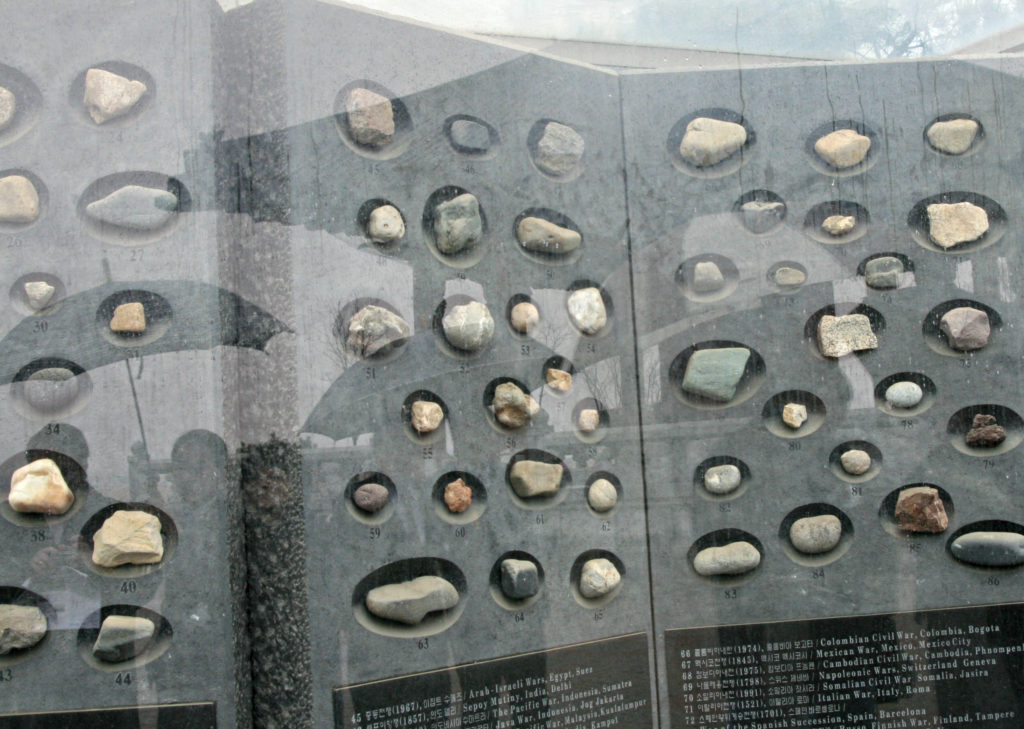

This is Freedom Bridge. It was built in 1953 at the end of the Korean War for the exchange of prisoners of war. Most bridges connecting North and South Korea were destroyed during the war. There were also still many land mines in the area. So the Freedom Bridge served as the means to safely exchange nearly 13,000 soldiers. Today, there are many ribbons tied to the bridge. These are messages from South Koreans to their family members still in North Korea, or are tied to the bridge in memory of family members who have died in North Korea. Just beyond the barbed wire at the end of the Bridge is the DMZ, entrance to which is of course strictly forbidden.
There is also an old steam locomotive near Freedom Bridge. The locomotive is riveted with over 1,000 bullet holes. During the war, the train took ammunition, supplies and troops to the front line. After the Chinese entered the war, US troops ultimately destroyed the locomotive, fearing it would fall into the hands of the North. It remained in the DMZ for nearly 50 years before being moved to Imjingak where it has become one of the symbols of the Korean War.

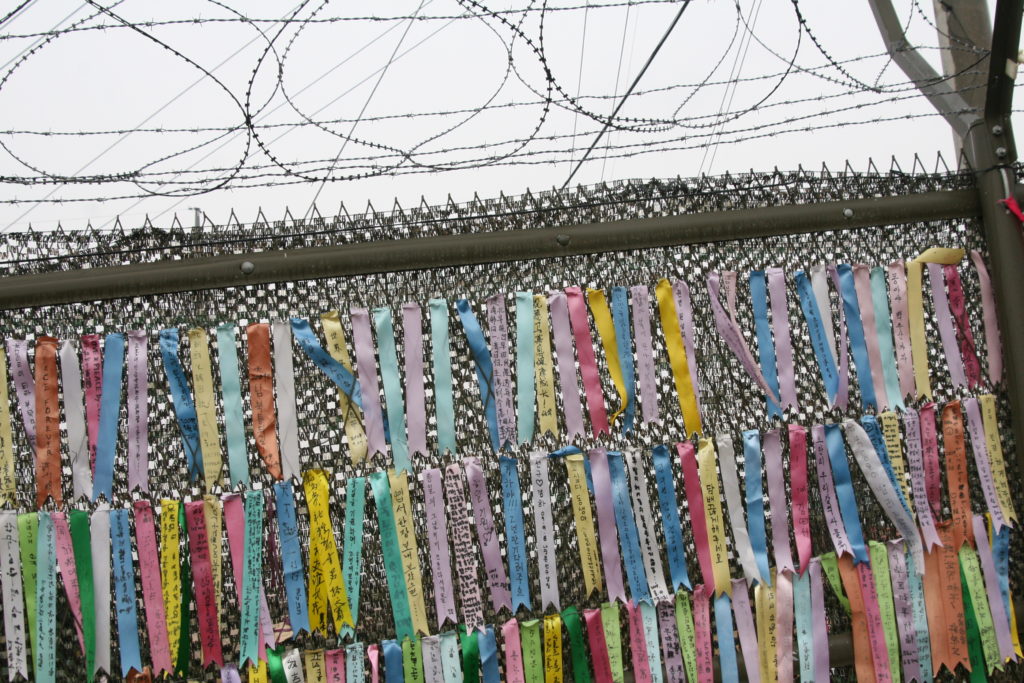

Next is a monument to United States soldiers who fought in the Korean War. It is surrounded by the flags of nations who sent soldiers to fight on behalf of South Korea. There is also a close-up picture of one of the many panels within the monument. There is a statue of President Truman near this monument. It was very evident from our guide that the people of South Korea appreciate Truman’s decision to support South Korea and that they remember the sacrifices of the United States soldiers fighting in the war. The last statue is of a mother and two children. I don’t remember the significance of the statue – perhaps it represents peace or reunification of families – but whatever its meaning, I thought it was beautiful.
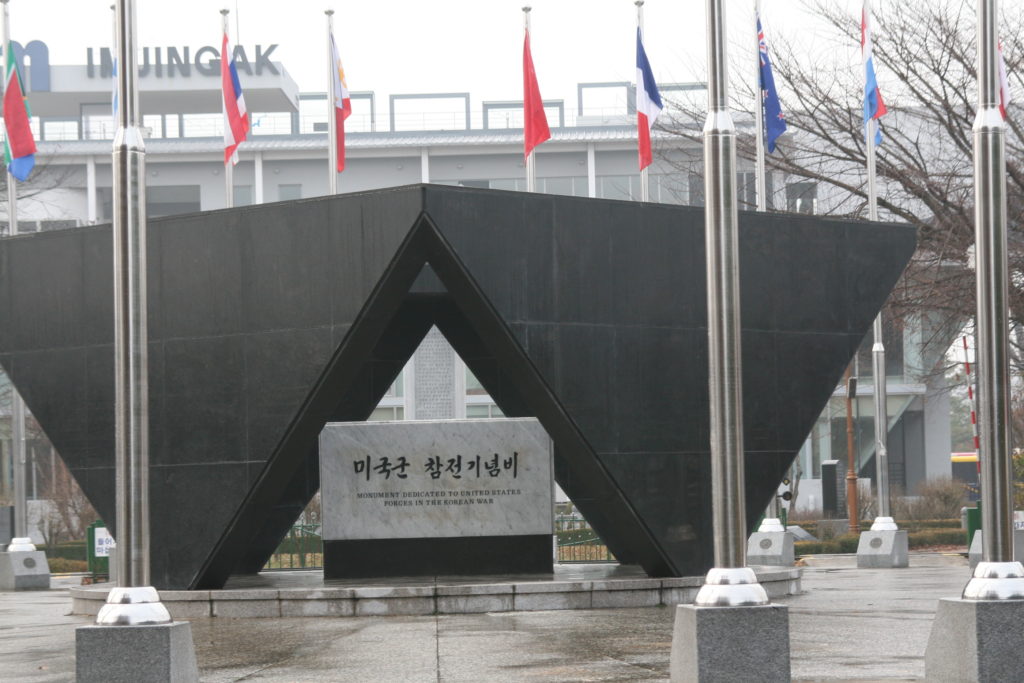
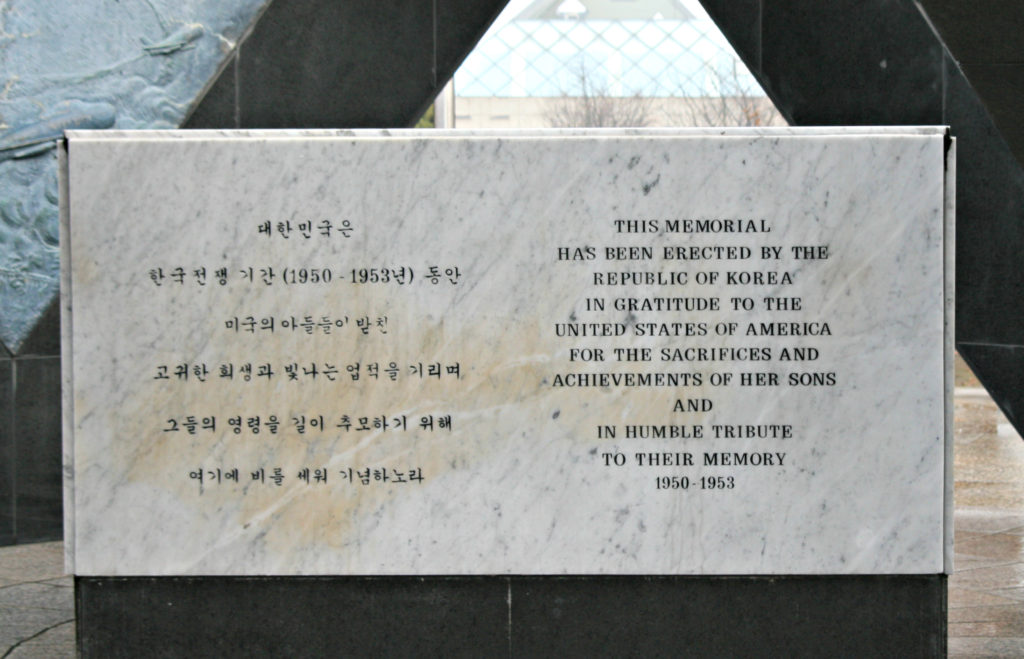

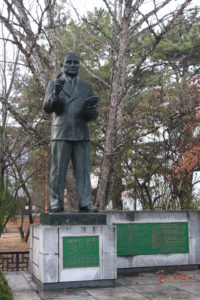

It is estimated that five million North Koreans escaped to the South in search of freedom. After the war, many of these people would come to Imjingak on Chuseok, which is a three-day celebration of Thanksgiving. Like in the United States, it is a time for families to gather. In Korea, it is also a time to give thanks for ancestors and relatives who have passed. The people who came to Imjingak made a temporary altar and held memorial services for those left behind or who had passed and were buried in the North. The South Korean government built a permanent altar for this purpose which was completed in 1985. Named the Mangbaedan Altar, it faces North Korea. The monument symbolizes the hope for reunification. The seven panels behind the altar represent provinces or parts of provinces in North Korea. The third picture of the altar was taken from the observation area at Imjingak. There was a light rain the day we visited which resulted in the differences in coloring you see on the panels.

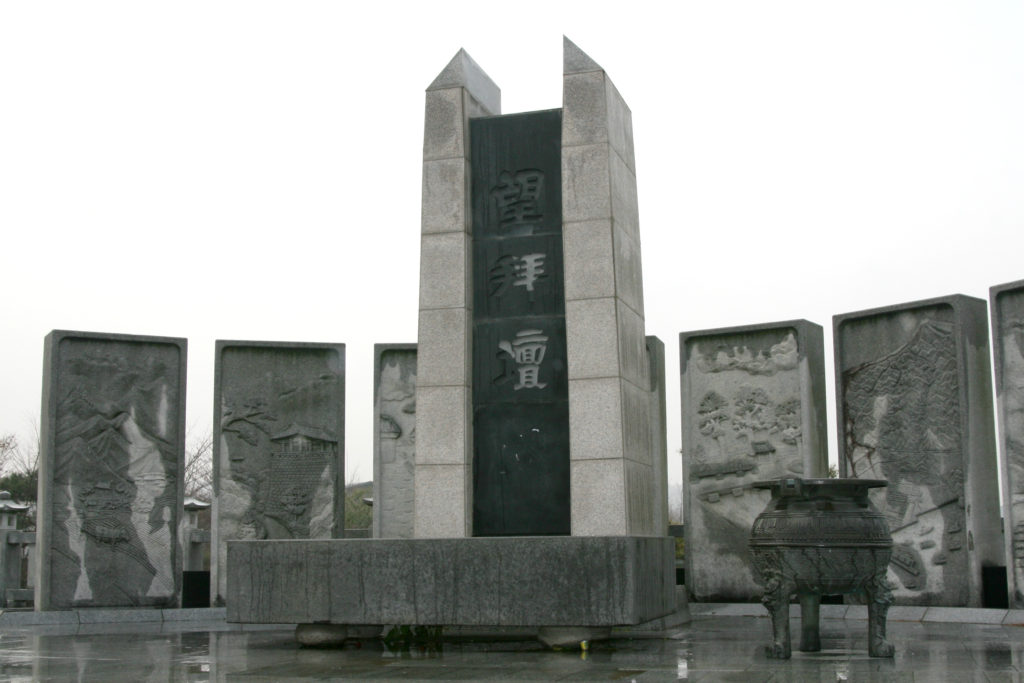

Pictured below is a platform that serves as an observation deck. From here, we could see land that is part of North Korea. The next two pictures below were taken from this platform and the last one from near the Freedom Bridge. In the first of the two taken from the observation deck, you can see Freedom Bridge on the right side. North Korea lies just beyond the river in these pictures (Imjin River).

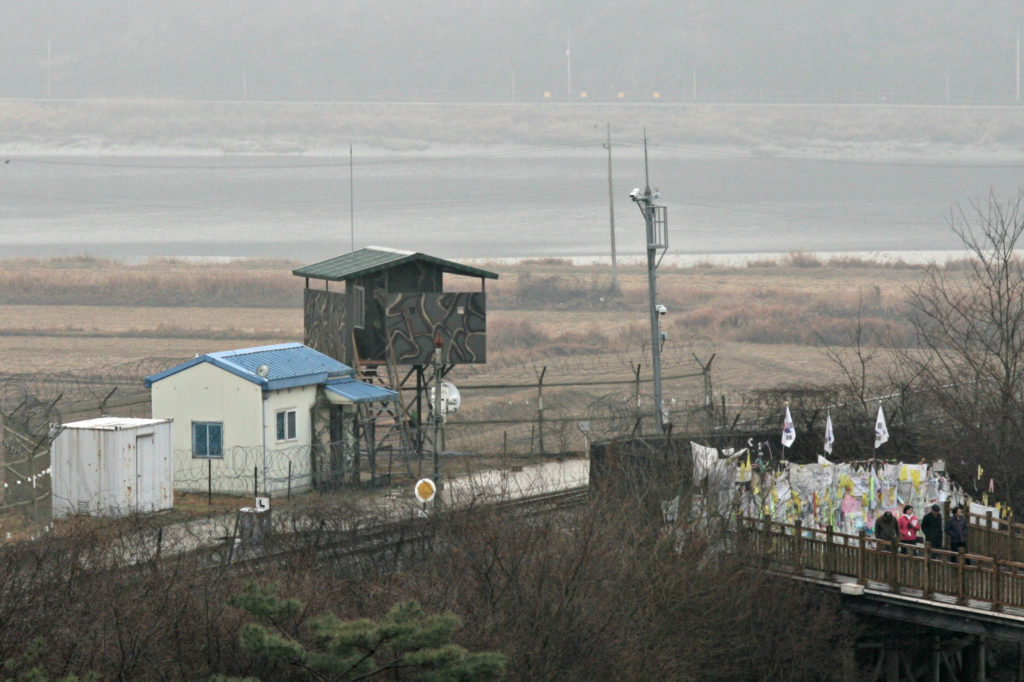
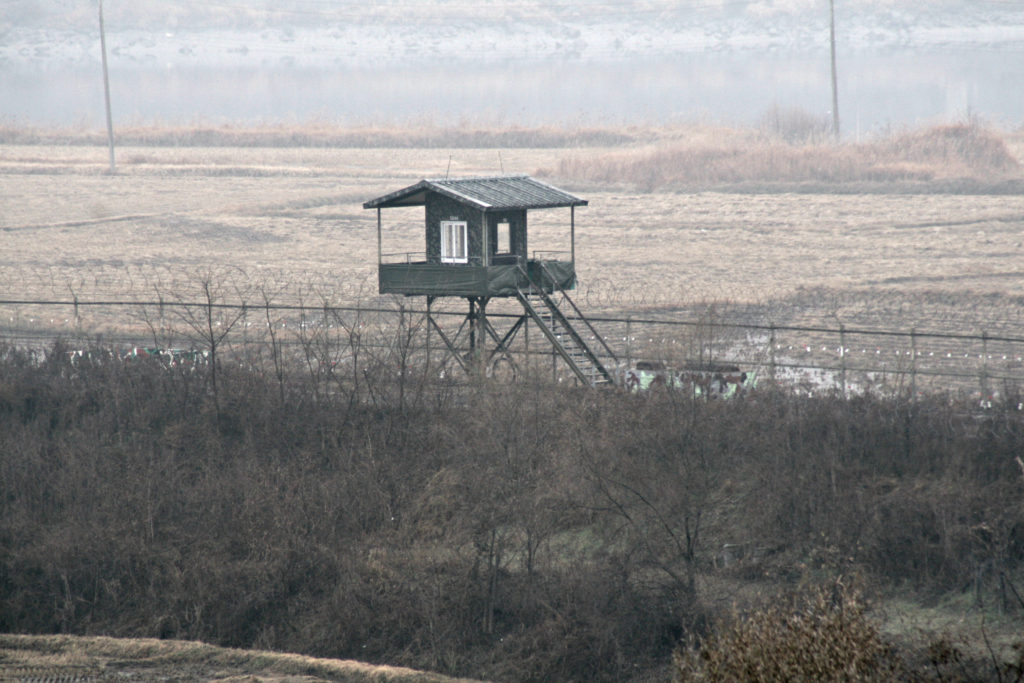
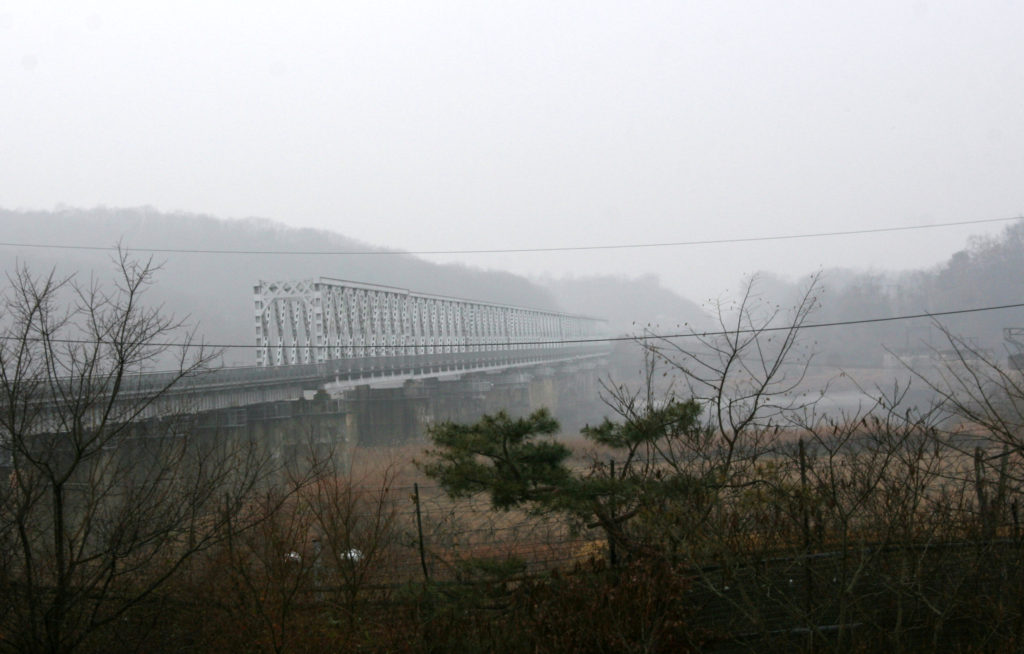
As we were driving back to Seoul, barbed wire lined the highway and we could see guard houses every half mile or so. While you cannot see soldiers in the two pictures I have included, the guard houses were manned. South Korea is constantly on guard from invasion by the North. The tension that we read about and hear about in the news is part of everyday life in Korea. While many hope for reunification, others have concern about potential economic ramifications due to the extreme poverty in North Korea. Nonetheless, all the people of Korea have a profound hope for peace.
